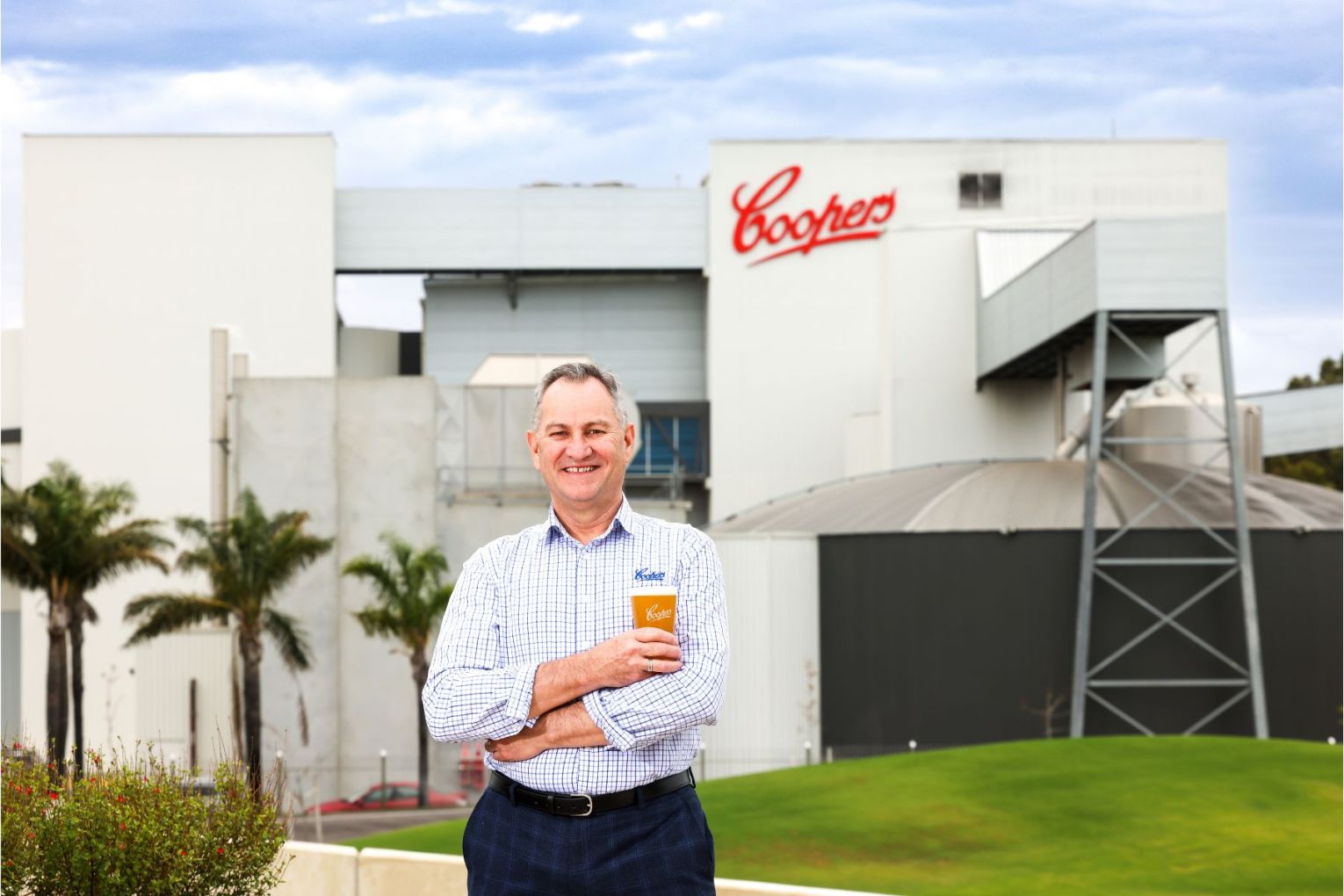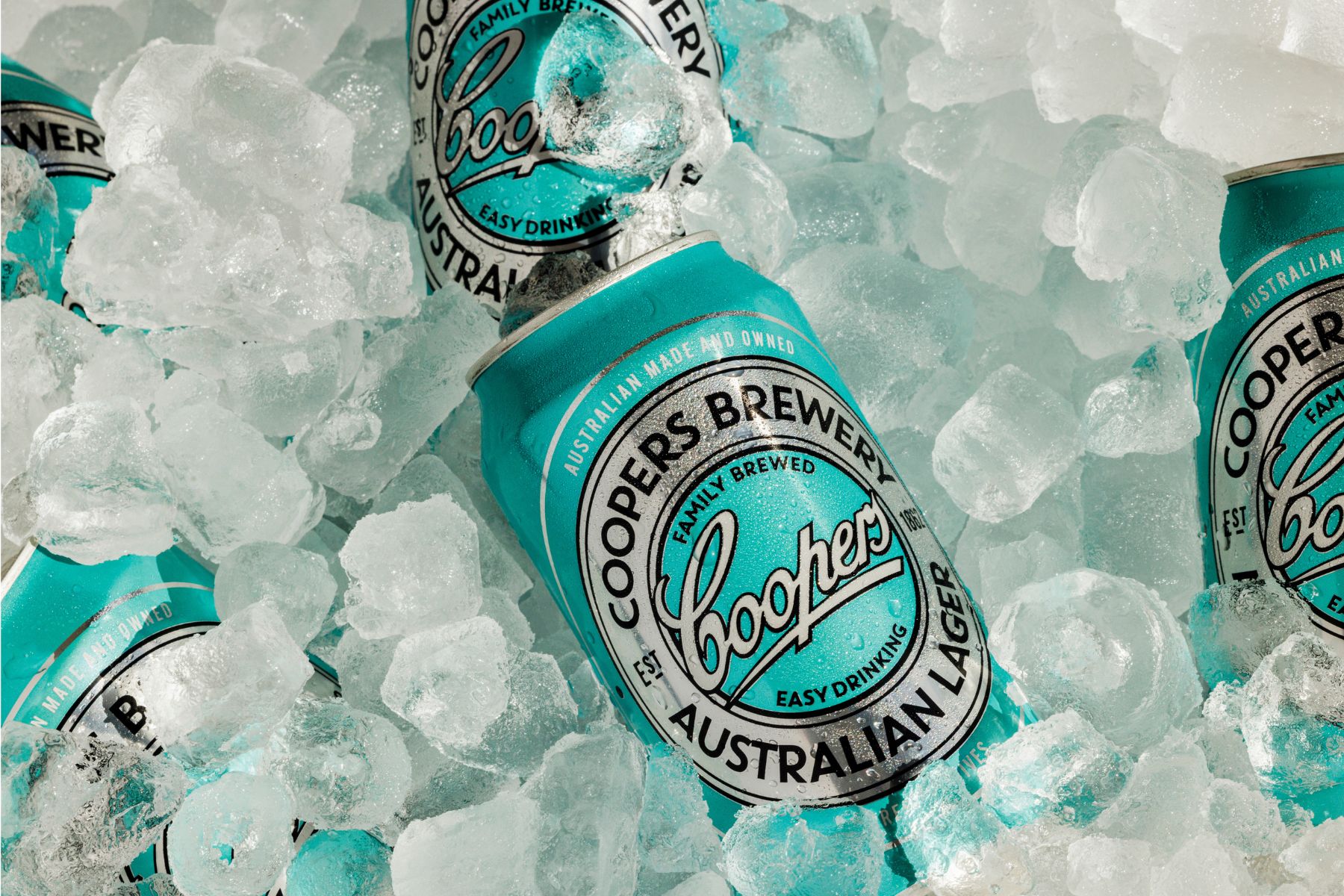Coopers’ profits go flat, dropping by $10m
South Australian family business Coopers has seen its $70 million visitor centre at Regency Park give profits a whack. The brewer’s new CEO tells why he still thinks it’s a shrewd investment.

Coopers’ profit-before-tax was $22.5 million in the latest financial year, down $10 million on the year prior, after costs associated with its new Regency Park visitor centre took a toll on the bottom line.
Interest payments and depreciation costs were the main culprits of the lower profit result, newly appointed managing director Michael Shearer told InDaily.
But the company, which ranked at number 27 in the 2025 South Australian Business Index, sold almost two million litres more of beer during the past year than the prior period, Shearer said, bucking the national trend of a beer market that contracted 0.9 per cent in the same 12 months.
“With a $70 million development that’s financed through debt, obviously there’s a considerable increase in finance costs, plus a corresponding increase in depreciation,” said Shearer, who replaced Dr Tim Cooper as the brewery’s boss in January this year.
“We wanted to make sure that the service delivery was as per the expectations of our consumers. The brand home – the visitor centre – is a representation of Coopers and the quality that we have in our beer.
“We wanted to extend that to the experience that people had here. Obviously, with the start-up costs that clearly had an impact on the results.”
The value of the new visitor centre was “intangible at times”, Shearer said, but invaluable too in terms of promoting the Coopers brand. It was utilised by sales and marketing teams nationally to tell the Coopers story to trade groups and customers: “there, they get to experience the heritage of Coopers”.
“From a South Australian perspective, we are very familiar with Coopers, but we’ve still got a lot of opportunity nationally to bring awareness to our brand,” he said.
You might like
Those efforts paid off with Coopers recording growth across all states and territories in Australia.
South Australia remained the brand’s largest market, followed by New South Wales (sales up 1.9 per cent) and Queensland (sales up 4.8 per cent).
The latter was the brand’s largest growth market last year, where Coopers’ Australian Lager and Dry 3.5 performed well.
Sales also grew in Victoria by 3.3 per cent, in the Northern Territory by 2 per cent, and in Western Australia by 0.8 per cent.
But export sales (excluding New Zealand, where sales rose by 2.6 per cent) fell 22.3 per cent in the period.
Shearer said the expert market beyond New Zealand was “very difficult”.
“Our sales in the UK and US have declined, but we’ve been picking up sales in more of the closer Asia Pacific regions,” he said.
“We’ve had growth in Japan but we’re fairly widely spread. We’ve still got our beer in France and in Belgium, but the growth has been more in Japan and Vietnam.
“It’s very difficult with the relatively high manufacturing costs in Australia. You combine that with the logistics and freight costs, and they went up significantly during COVID and never got back to the levels they were.
“We see Coopers as being special, but we need to convince the rest of the world when it lands on their shelf at a premium to the local beers why it’s worth buying.”
Stay informed, daily

Back locally, he said Coopers was bucking national beer sales trends because the company “consistently delivered great quality beer”.
“The real key is the value proposition,” he said.
“It’s great quality at an affordable price. We actually deliver nine litres in every carton.”
By product, demand was strong for Dry 3.5 and Australian Lager – newer products for Coopers. Traditional ale products also continued to grow at 1.2 per cent, and Stout had a resurgence with a 3.3 per cent increase over the prior year, Shearer said.
Pale Ale remained Coopers’ number one product – 41 per cent of total sales volume – followed by Mild Ale, which sold 10 million litres.
Shearer said Sparkling Ale was Coopers’ “absolute standout” with 3.3 per cent sales growth, and was performing strongly despite a trend towards low-carb, low-calorie, low-alcohol products.
“People often ask me what’s my favourite beer, and it really does depend on the occasion, but I must say, I love sitting quietly at home with a cold long neck of Sparkling Ale poured into a smaller butcher-style glass,” he said.
“There’s nothing better.”
Keg sales represented around 12.4 per cent of total sales and were 5.9 per cent higher in the financial year, while packaged beer sales rose 1.8 per cent.
Malted barley and wheat sales rose 3.4 per cent, and DIY brewing product volumes were down 17 per cent.
Sales momentum also continued into the new financial year, according to Coopers.








